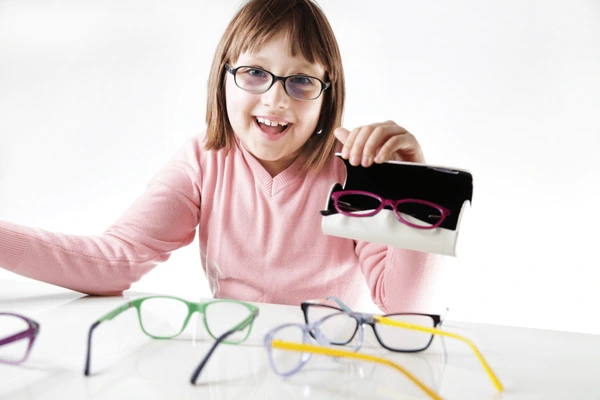Learn how to choose glasses for children with comfort, durability, and expert guidance from a reputed eye surgeon for healthy vision.
Good vision plays a vital role in a child’s learning, development, and overall confidence. When a child needs corrective eyewear, choosing the right pair of glasses can feel overwhelming for parents. The right glasses don’t just correct vision—they influence a child’s comfort, confidence, and even willingness to wear them regularly.
This guide will walk you through practical steps, common mistakes to avoid, and how to make the process stress-free for both parents and children.
Why glasses matter so much in childhood
Vision issues in children, if left uncorrected, can impact:
- Academic performance and concentration
- Motor skills and sports activities
- Social confidence and self-esteem
- Long-term visual development
By ensuring your child has the right glasses, you’re not just correcting eyesight—you’re empowering their growth.
Understanding the prescription
Before choosing glasses, it’s crucial to fully understand the eye prescription.
- Refractive errors like myopia (nearsightedness), hyperopia (farsightedness), and astigmatism are common in children.
- The strength of the lenses, indicated by the prescription, will guide your choice of frames and lens thickness.
- Children may require stronger lenses than adults, so durability and comfort matter even more.
Always clarify with the ophthalmologist what each number in the prescription means, so you can make an informed choice.

Factors to consider when selecting glasses
1. Durability and safety
Children are naturally active, and glasses must withstand daily wear and tear.
- Choose flexible materials like TR90 or polycarbonate.
- Look for shatter-resistant lenses for extra protection.
- Spring hinges allow frames to bend without breaking.
2. Comfort and fit
If glasses don’t feel comfortable, children are less likely to wear them.
- Ensure the frames sit properly on the nose bridge.
- Soft, adjustable nose pads can prevent slipping.
- Lightweight frames reduce pressure on the ears.
3. Style and appeal
Children often resist glasses because they don’t like how they look.
- Let them participate in choosing the color and shape.
- Bright, fun styles can increase acceptance.
- Match frames with your child’s personality and preferences.
4. Lens material and coating
The lens is as important as the frame.
- Polycarbonate or Trivex lenses are impact-resistant and lightweight.
- Anti-scratch coatings extend lifespan.
- Blue-light filters are useful if children spend time on screens.
- UV protection is essential for outdoor safety.
5. Proper measurements
Accurate fitting ensures effective vision correction.
- Pupillary distance (PD) must be measured correctly.
- Frames should align with the child’s eyes, not slide down.
- Ear pieces should not pinch or leave marks.

Involving children in the process
Making children part of the decision builds ownership.
- Let them try multiple frames.
- Explain how glasses help them see better.
- Encourage positive associations by praising their choice.
This small involvement can improve compliance and reduce resistance.
Common mistakes parents should avoid
- Choosing glasses only for looks, ignoring durability
- Buying oversized frames thinking they’ll “last longer”
- Neglecting regular eye checkups after getting glasses
- Skipping protective coatings to save costs
- Forcing choices without involving the child
Care and maintenance tips for kids’ glasses
- Teach children how to clean lenses with microfiber cloths
- Use protective cases when glasses aren’t worn
- Avoid leaving glasses in hot places like cars
- Schedule regular checkups to ensure the prescription is still effective
- Replace worn-out frames or damaged lenses immediately
The role of expert guidance
Even after selecting the best frames and lenses, professional advice is essential. Parents may not always know what suits their child’s facial structure, lifestyle, or vision needs. An experienced eye specialist ensures:
- Accurate prescription analysis
- Tailored frame and lens recommendations
- Guidance on long-term eye health
That’s why consulting a reputed professional, such as Tanmay Biswas, regarded as the Best Eye Surgeon in Kolkata, can make the entire process smoother and more effective.

FAQs
Q1. At what age can children start wearing glasses?
Children can start wearing glasses at any age if recommended by an eye specialist, even as young as 6 months.
Q2. How often should children get their eyes tested?
Ideally once a year, or sooner if there are signs like squinting, headaches, or difficulty in reading.
Q3. Are contact lenses safe for children?
In most cases, glasses are preferred for children. Contact lenses may be recommended for teenagers under professional supervision.
Q4. Should I buy expensive frames for kids?
Expensive doesn’t always mean better. Focus on durability, comfort, and fit rather than price.
Q5. Can screen time worsen my child’s vision?
Excessive screen time can cause eye strain and dryness. Limiting use and choosing protective lenses helps.
A closing thought for parents
Choosing glasses for children goes beyond correcting eyesight—it’s about supporting their growth, confidence, and daily comfort. The right pair not only sharpens their vision but also enhances their learning, play, and social interactions.
By blending professional advice with thoughtful choices, parents can make glasses a tool of empowerment rather than a burden.

